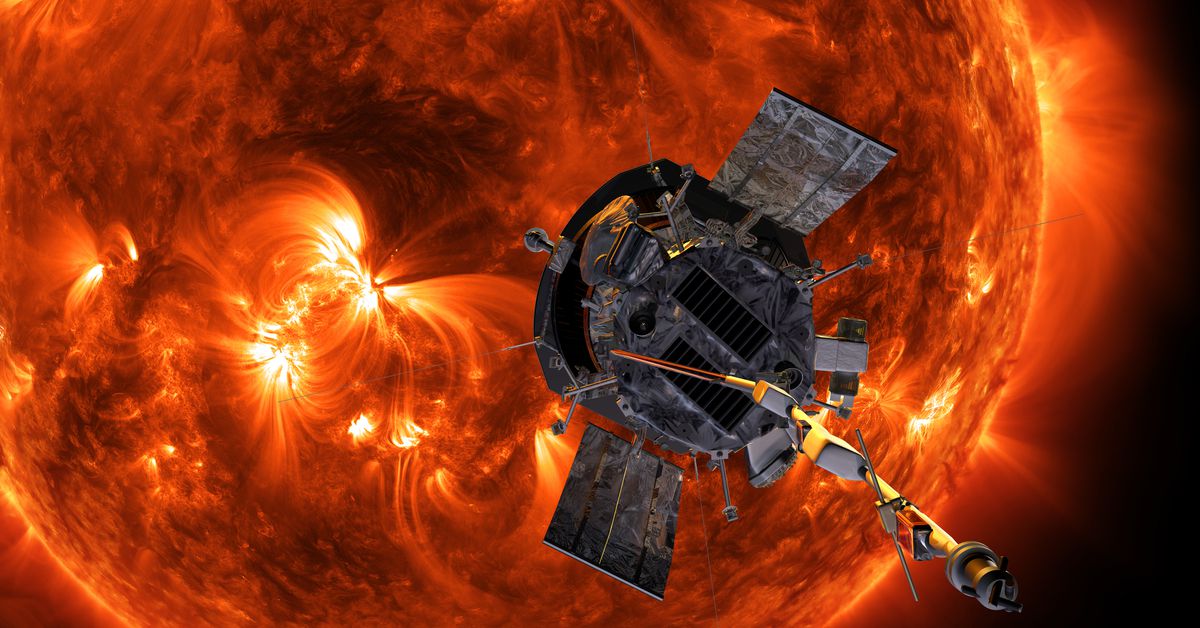NASA’s Parker Solar Probe has made history by becoming the closest human-made object to the Sun, flying a mere 3.8 million miles from its surface and sending back data indicating it is in good health.
Mission Overview
The Parker Solar Probe was launched on August 12, 2018, as a collaborative effort between NASA and Johns Hopkins Applied Physics Laboratory. The mission aims to study the corona, the Sun’s outer atmosphere, which is hotter than its surface by millions of degrees. To achieve this, the probe has undergone several close encounters with the Sun, with the latest one taking place on December 24th.
Closest Approach
The Parker Solar Probe flew within 3.8 million miles of the Sun’s surface at a speed of approximately 430,000 miles per hour. During this time, mission operations were out of contact with the probe due to its proximity to the Sun. However, NASA officials confirmed on December 26th that the probe had transmitted a signal back to Earth, indicating it was still operational.
Data Transmission and Analysis
The successful data transmission from the Parker Solar Probe is expected to provide valuable insights into the solar wind, heat, and energetic particles accelerated by the Sun. According to NASA, the close flyby will help scientists better understand how the corona gets so hot, a phenomenon that has puzzled researchers for decades.
Parker Solar Probe’s Heat Shield
To withstand the intense heat generated during its approach, the Parker Solar Probe is equipped with a Sun-facing heat shield that reaches temperatures of around 2,500 degrees Fahrenheit. In contrast, the probe itself maintains a relatively cool temperature of just 85 degrees Fahrenheit, thanks to its clever design and insulation.
Mission Timeline
Here’s a brief timeline of the Parker Solar Probe’s mission:
- August 12, 2018: The Parker Solar Probe is launched into space as a collaborative effort between NASA and Johns Hopkins Applied Physics Laboratory.
- December 20th: The probe sets off on its mission to study the corona, with a series of close encounters planned with the Sun’s surface.
- December 24th: The Parker Solar Probe flies within 3.8 million miles of the Sun’s surface at a speed of approximately 430,000 miles per hour.
- December 26th: NASA officials confirm that the probe has transmitted a signal back to Earth, indicating it is in good health and operating normally.
- January 1st: The Parker Solar Probe is expected to send detailed telemetry data on its status, providing valuable insights into its performance and operation.
Importance of the Mission
The Parker Solar Probe’s close encounter with the Sun marks a significant milestone in space exploration. By studying the solar wind, heat, and energetic particles accelerated by the Sun, scientists can gain a deeper understanding of our star’s behavior and its impact on the surrounding environment.
Future Prospects
The success of the Parker Solar Probe’s mission has opened up new avenues for research and exploration. Future missions are expected to build upon the knowledge gained from this mission, with a focus on studying the Sun’s corona in even greater detail.
Conclusion
The Parker Solar Probe’s close encounter with the Sun is a testament to human ingenuity and determination. As we continue to push the boundaries of space exploration, we can expect even more groundbreaking discoveries that will shed light on the mysteries of our solar system.

